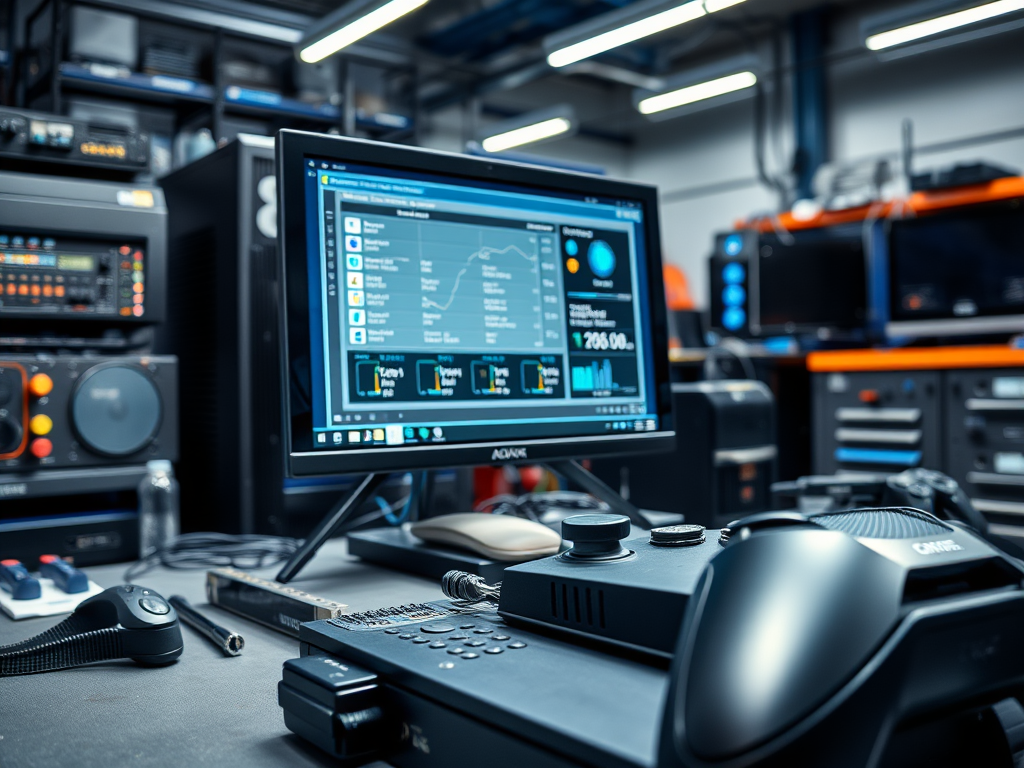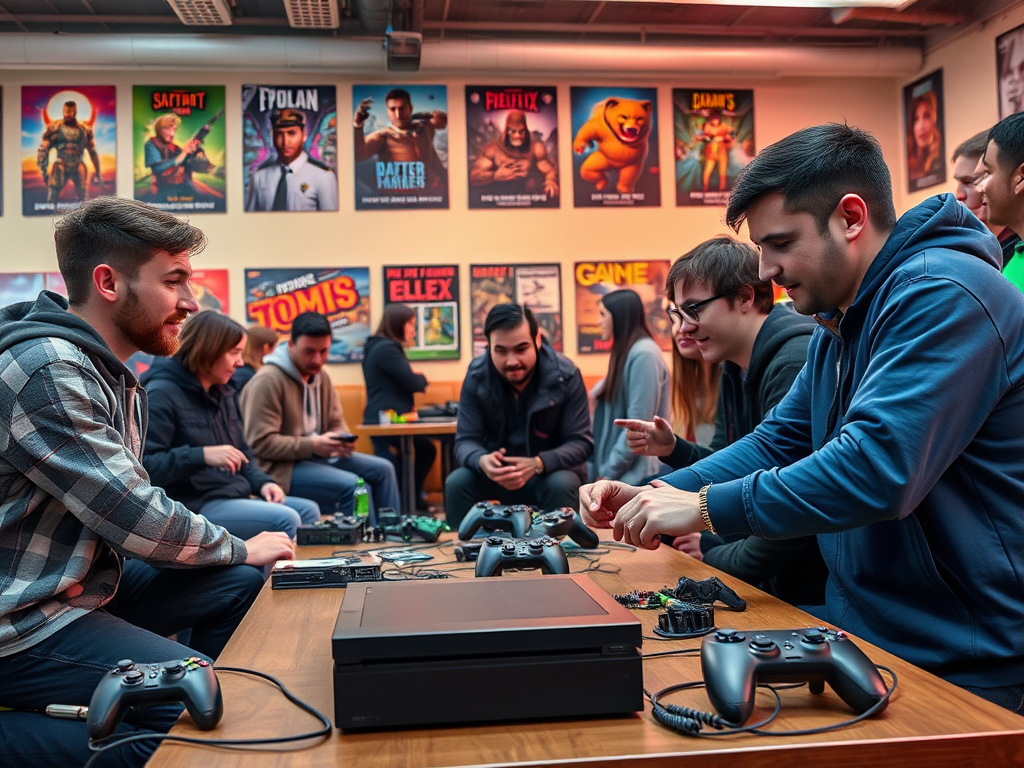As the gaming world continues to thrive and expand, players are investing more than just their time and passion waiting for the next big title; they are investing in their gaming consoles, the heart of their experiences. With a myriad of issues that can arise during gaming sessions—from overheating to hardware failures—the need for console repairs becomes increasingly paramount. Current trends indicate that gamers are not only looking for quick fixes but are also interested in sustaining their devices longer. Additionally, the rise of technology is revolutionizing how repairs are conducted, making them more efficient and accessible than ever. As we delve deeper into this topic, we explore the trajectory of console repairs, examining how consumer behaviors and technological advancements shape the landscape. Ultimately, the future of console repairs is a topic that resonates with gamers who want durability coupled with efficiency.
Technological Advancements Impacting Console Repairs

Technological innovation serves as both the backbone of the gaming industry and the catalyst for effective console repairs. With the advent of cutting-edge tools, repairing consoles is getting faster and more precise. This transformation is essential in a market where reliability and performance are critical for gamers who demand the best. The integration of artificial intelligence and enhanced diagnostic tools allows for quicker identification of issues. Traditional methods appear cumbersome when compared to today’s digital solutions. As these advancements continue, we can expect to see a significant shift in how repairs are executed.
The landscape of console repair is steadily evolving, and some of the key innovations include:
- Advanced diagnostic software that helps detect problems efficiently.
- High-precision tools for seamless hardware repairs, minimizing the risk of further damage.
- 3D printing technology, enabling custom parts production, which can extend the life of older consoles.
Shifts in Consumer Preferences

Today’s consumers are notably more informed and active in the repair process. With a wealth of information at their fingertips, many gamers are opting for do-it-yourself (DIY) repairs rather than relying solely on professional services. This shift signals a broader trend where individuals value independence and skill acquisition. Furthermore, the gaming community has risen to meet this evolving demand, creating extensive resources to support DIY efforts. Gamers can now find everything from video tutorials to detailed step-by-step guides. Not only does this foster a sense of community, but it enriches the overall gaming experience as players take command of their equipment.
Below are several resources that have sprouted from the gaming community, guiding enthusiasts in their repair journeys:
- Video tutorials hosted on platforms like YouTube.
- Step-by-step repair guides available on forums and dedicated websites.
- Peer-to-peer support options that allow gamers to share tips and experiences.
Sustainability and Environmental Considerations
An increasingly urgent topic surrounding console repairs is sustainability, especially as environmental awareness grows. Gamers are becoming more conscious of the ecological impact their hobby may have. By encouraging repairs rather than replacements, the gaming industry can reduce e-waste, a pressing global issue. Embracing a culture of repair reflects a commitment to environmental responsibility and can affect how future generations approach gaming. Thus, sustainability is not just an abstract concept but a practical consideration that will influence consumer choices and repair practices.
Repairing consoles leads to several tangible benefits, including:
- Minimizing e-waste through longevity.
- Encouraging recycling initiatives among manufacturers and consumers alike.
- Shifting industry standards to promote durable products designed for repair.
| Aspect | Traditional Repair | Modern Repair |
|---|---|---|
| Repair Time | Longer due to manual diagnostics | Quicker with AI diagnostic tools |
| Cost | Often higher despite common repairs | More competitive with DIY options |
| Skill Level Required | Expertise in hardware needed | Accessible to beginners with guides |
The Role of Professional Repair Services
Even as DIY solutions gain traction, professional repair services remain indispensable. These services offer advantages that many gamers may find compelling enough to opt for. Expertise, accountability, and warranty coverage are among the key benefits. Moreover, as gaming technology becomes increasingly complex, a professional’s knowledge can be invaluable when faced with intricate issues. The industry is also witnessing a transformation in how these repair shops conduct business, aligning their strategies with evolving consumer needs.
In contrast to the rise of online repair services, physical repair shops are adapting and thriving. These establishments enhance their customer-service approaches and actively seek partnerships with manufacturers. Localized repair hubs are emerging, positioning themselves as community-centric solutions to meet gamer needs. Thus, brick-and-mortar shops are not only surviving in the digital age, but they are also finding innovative paths toward relevance.
Conclusion
In summary, the future of console repairs in the gaming industry is characterized by rapid change and adaptation. As technology continues to flourish, and consumer preferences lean toward sustainability and empowerment, the landscape for repairing consoles will only become more diverse and accessible. With gaming hardware continuing to serve as a vital component of the player experience, embracing these shifts will ensure lasting impact for gamers. The fusion of DIY efforts and professional services will shape a promising future where repairs are not only feasible but are an integral part of gaming culture.
Frequently Asked Questions
- What types of issues are most commonly repaired in gaming consoles? Many consoles experience issues like overheating, disk drive failures, power supply problems, and software glitches.
- Are there benefits to repairing a console instead of buying a new one? Yes, repairing can save money, reduce electronic waste, and often offer a quicker solution than purchasing a new device.
- How can I find a reliable console repair service? Look for reviews online, check service warranties, and consider recommendations from fellow gamers.
- What tools do I need for DIY console repairs? Basic tools include screwdrivers, thermal paste, and a multimeter. Online tutorials can provide specific tool lists based on the repair needed.
- Is it safe to open up my console for repairs? While many repairs can be done safely with the right tools and instructions, opening a console voids warranties and could cause further damage if not done correctly.


